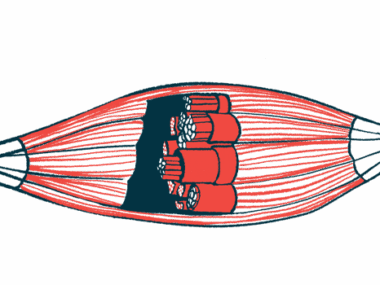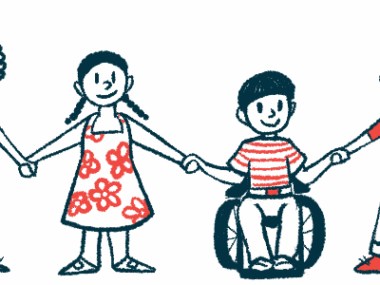3D-printed exoskeleton can boost effects of physical therapy for SMA
Device led to some functional gains in children with motor impairments
Written by |

Scientists in Spain have developed an upper limb exoskeleton device and accompanying video game-based program to boost the effects of physical therapy in children with motor disabilities such as those seen in spinal muscular atrophy (SMA).
The device, created with a 3D printer, was designed to be more affordable and user-friendly than existing exoskeletons used for these purposes. In a small validation study involving children with motor impairments, the device was found satisfactory by users and led to some functional gains, but more studies will be needed to fully establish its effects.
“All in all, it can be concluded that a new 3D-printed passive upper limb exoskeleton has been developed,” researchers wrote. “The device has been functionally validated … in a real clinical setting, rendering it ready for utilization in future studies both in the clinical and research domains.”
The study, “Design, Development, and Functional Validation of a 3D-printed Passive Upper Limb Exoskeleton,” was published in IEEE Transactions on Neural Systems and Rehabilitation Engineering.
In SMA, the nerve cells involved in voluntary muscle control progressively degenerate, leading to symptoms such as muscle weakness and wasting. As such, children with the rare disease experience motor disability that gets worse over time.
Physical therapy can help children with SMA preserve, improve motor function
Physical therapy can help children with SMA preserve or improve their motor function and gain greater daily life independence.
The use of wearable suits, or exoskeletons, during physical therapy has emerged as a way of boosting these benefits. These wearable devices can help support a person’s weight and make it easier for them to complete physical tasks they normally wouldn’t be able to. They can also help with strength training by providing resistance, depending on a patient’s needs.
Exoskeletons have demonstrated an ability to increase mobility, and improve strength in children with SMA.
In the recent report, scientists described the design of an upper limb exoskeleton called Powerup. Their goal was to come up with a non-motorized (passive) device that would be more affordable and easier to adapt to both clinical and at-home settings than existing options.
To generate its prototype, the team used a 3D printer and common materials. The use of this affordable technology makes it cheaper and easier to adjust the exoskeleton or build customizable parts, according to the researchers.
‘Lightweight, low-cost, and easily reproducible’
“This characteristic enables the solution to be lightweight, low-cost, and easily reproducible, facilitating its accessibility and, consequently, benefits a wide population of people affected by motor disability,” they wrote.
With the device, an exoskeleton for each arm is anchored on a stand, and can be adjusted using elastic bands to provide either movement assistance or resistance to certain parts of the upper limbs as needed.
The scientists also designed a video game-based rehab task that could be done while children were using the exoskeleton. During the game, a patient would be asked to guide an avatar through a scenario, requiring them to move their elbows and shoulders in certain ways. The user controls the video game via a sensor placed under their hand.
The researchers conducted small validation studies of the Powerup exoskeleton in seven children with motor disability affecting the upper limbs, two of whom had SMA.
After an initial functional evaluation, the children underwent eight 50-minute rehabilitation sessions with the exoskeleton.
Overall success rate of rehab program was 88%
The overall success rate of the rehabilitation program was 88%, meaning that children could complete the video game tasks successfully with the help of the exoskeleton 88% of the time. This would be considered somewhere between a “good” and “very good” result in rehabilitation settings, according to the researchers.
Functional evaluations after the rehab program indicated patients experienced improvements in range of motion and upper limb function.
Participants generally found the device to be safe and user-friendly. Still, the weight of the device and comfort to the user emerged as areas of improvement in future development.
“Further research and an exhaustive functional analysis are required for the determination of the real impact in clinical applications,” the researchers wrote, noting this is the goal of an ongoing research project being conducted in collaboration with rehabilitation centers in Spain.








